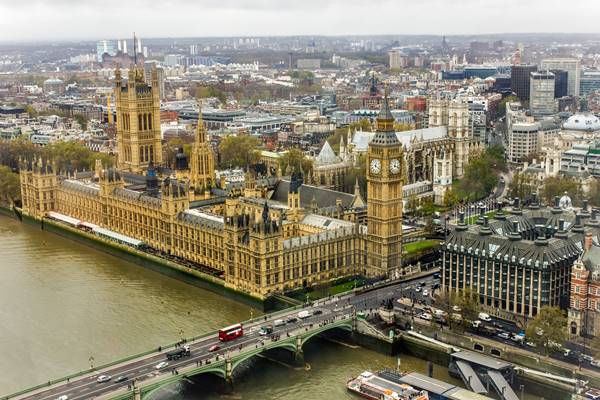The historical significance of Panama and Colon lies in their pivotal role as strategic locations connecting the Atlantic and Pacific Oceans. Panama, known for its iconic Panama Canal, has been a crucial maritime route since its completion in 1914. This engineering marvel revolutionized global trade by providing a shortcut for ships, saving time and resources. Moreover, it facilitated cultural exchange as people from diverse backgrounds settled in the region.

Similarly, Colon played a significant role as the Caribbean entrance to the canal, fostering economic growth and international commerce. These cities became melting pots of cultures, fostering multiculturalism and contributing to the development of vibrant societies that continue to shape Panama’s identity today.
Things to do in Colon on a Cruise
The two main attractions in Panama (in the case of a cruise calling at the Port of Colon) are Panama City and the Canal Locks
You can find tour package providers at the exit of Colon Port Mall. Usually the packages include a visit to Panama City and one of the Locks, along with some short stops at less interesting sights – monuments – souvenir shops.
Panama City
Panama City is about 75 km (47mi) from Colon and the journey takes about 1 hour by car
Time is limited so you have to make the most of it.
Casco Viejo (Old Town) Points of Interest :
Plaza De La Independencia
Catedral Basílica Metropolitana (Santa María La Antigua)
Plaza Simón Bolívar
Iglesia San Francisco de Asís
Plaza Tomás Herrera
Plazoleta Medio Baluarte
Plaza de Francia
Monumento al canal de Panama
Agua Clara and Miraflores Locks
If your cruise does not include a passage through the canal and you are curious to see how it works then you can visit the Agua Clara Locks (located near Colon) or the Miraflores Locks (located near Panama City). Since time is limited on a cruise, get an idea of what you are going to see : Videos of Agua Clara and Miraflores Locks
Agua Clara visitor center and Miraflores Locks visitor center, are observatories for ships passing through the Locks. Loudspeakers provide information about the passing ship and describe the process. When the ship enters the Lock with the help of the pilot ships, the doors are closed and water is emptied or filled to decrease or increase the water level respectively. In case there is no ship passing, there is also a room where a video of the process is shown. Tip before entering ask if there are any ships to pass. Entrance fee Agua Clara $10.7 Miraflores Locks $20
Tourism Attractions in Panama and Colon
Panama and Colon, two captivating regions in Panama, boast a plethora of tourism attractions that cater to diverse interests. In Panama City, travelers can marvel at the awe-inspiring Panama Canal, an engineering marvel connecting the Atlantic and Pacific Oceans.
The historic Casco Viejo district enchants visitors with its cobblestone streets, colonial architecture, and vibrant nightlife. Nature enthusiasts will find solace in the lush rainforests of Soberania National Park or the pristine beaches of San Blas Islands.
In contrast, Colon offers a unique blend of history and culture with its beautifully preserved colonial buildings like the Gatun Locks Visitor Center and Fort San Lorenzo.
The Economy and Infrastructure of Panama and Colon
The economy and infrastructure of Panama and Colon play a crucial role in the country’s development and regional connectivity. As the financial hub of Central America, Panama boasts a thriving service-based economy, with sectors such as banking, insurance, logistics, and tourism driving its growth. The Panama Canal is undoubtedly the cornerstone of the nation’s economic success, facilitating global trade and generating substantial revenue.
Furthermore, the government has invested significantly in modernizing transportation networks, including highways, ports, airports, and railways to enhance domestic and international connectivity. These infrastructure improvements have not only bolstered trade but also attracted foreign investment and positioned Panama as a strategic logistical center in the Americas. Such developments continue to fuel economic expansion and solidify Panama’s position on the global stage.
Challenges Faced by Panama in the Modern Era
In the modern era, Panama and Colon face numerous challenges that impact their development and progress. One of the key challenges is the high level of inequality and poverty prevalent in both regions. The income disparity between urban and rural areas remains significant, hindering equal opportunities for education, healthcare, and employment.
Additionally, inadequate infrastructure poses a major obstacle for economic growth and connectivity. The lack of proper transportation systems limits trade opportunities and hampers the movement of goods and services.
Furthermore, environmental concerns such as deforestation, pollution, and climate change threaten the natural beauty and resources of these regions. Overcoming these challenges requires comprehensive planning, investment in social programs, sustainable development initiatives, and collaborative efforts to address issues affecting Panama and Colon in a holistic manner.






